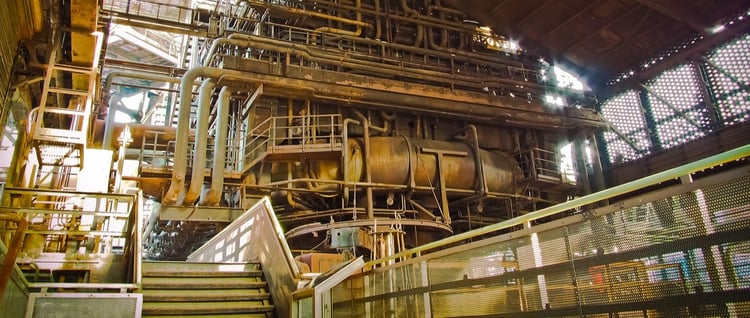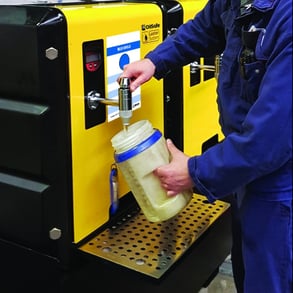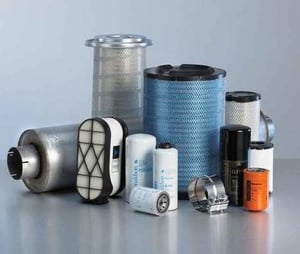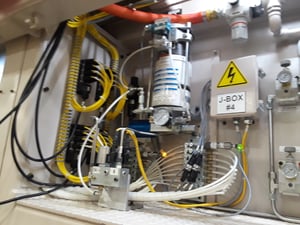
After being in the steel mill industry for almost 7 years, I have come across many positive and negative experiences regarding the conservation of lubricants. With that, I have come up with five common practices that if all performed to excellence, can provide a cost savings for steel mills.
1. Oil Analysis
Oil Analysis has been a common practice in most manufacturing industries and has proven to be a key piece in reducing oil usage and maintaining production equipment. The health of the lubricant is one parameter that distinguishes the difference between the oil used and the new oil, and how much it has changed. Observing the contamination aspect of the oil can determine how clean the oil is compared to ISO targets.
An important point to oil analysis is doing the test consistently, drawing the samples correctly, and upon receiving the results, being proactive with any corrective actions. I’ve seen it all too often when a company wants us to take samples for them, then they don’t want us to come back until 12 months later to take another sample. And in the interim, no actions are taken to assess and act upon the results. Over the course of the 12 months, the customer might have drained the oil, and put new oil in before we take the next sample, which makes the sampling less productive.
2. Oil Storage and Organization
 The proper storage, labeling and transfer of oils is equally important to oil analysis. Keeping contaminated oil in a machine is just as dangerous as putting the wrong oil into a machine. Both scenarios are common when manufacturers show little regard for care of their lubricants. We encourage companies to color code all fluids and use the same color-coding on the machines themselves. In doing so, manufacturers can greatly reduce the risk of putting the wrong lubricant in a machine. A step beyond this measure involves making a chart listing the lubricants, their identification color and the machines that use that oil; keep this chart near the fluid containment station for easy identification by maintenance personnel.
The proper storage, labeling and transfer of oils is equally important to oil analysis. Keeping contaminated oil in a machine is just as dangerous as putting the wrong oil into a machine. Both scenarios are common when manufacturers show little regard for care of their lubricants. We encourage companies to color code all fluids and use the same color-coding on the machines themselves. In doing so, manufacturers can greatly reduce the risk of putting the wrong lubricant in a machine. A step beyond this measure involves making a chart listing the lubricants, their identification color and the machines that use that oil; keep this chart near the fluid containment station for easy identification by maintenance personnel.
3. Grease and Oil Filtration
 Filtration goes hand in hand with oil sampling and fluid storage. Consistently filtering oils of both particles and water is important to maintain the life of gears in critical machinery. In many cases, if you keep the ISO targets consistent with the requirements of the equipment, you might be able to use the fluids much longer than anticipated, which can sometimes save thousands of dollars a year. Filtering new drums of oil, along with filtering the fluids in machinery with something as simple as a filter cart is a great first step in conserving oil.
Filtration goes hand in hand with oil sampling and fluid storage. Consistently filtering oils of both particles and water is important to maintain the life of gears in critical machinery. In many cases, if you keep the ISO targets consistent with the requirements of the equipment, you might be able to use the fluids much longer than anticipated, which can sometimes save thousands of dollars a year. Filtering new drums of oil, along with filtering the fluids in machinery with something as simple as a filter cart is a great first step in conserving oil.
4. Automated Lubrication Systems
 Automated Lubrication Systems are a less obvious factor in conserving the use of grease and oil. By having a pump, controller, and metering devices specifically designed for a piece of machinery, we can control the amount of oil or grease that is needed per lube point. Many plants still have manual lube routes, and some maintenance personnel are very particular and consistent with their manual lubrication usage. Others are not very consistent and tend to over or under grease when doing manual lube routes. By using an automated lube system, the human error element is reduced, and lubricants usage is more exact.
Automated Lubrication Systems are a less obvious factor in conserving the use of grease and oil. By having a pump, controller, and metering devices specifically designed for a piece of machinery, we can control the amount of oil or grease that is needed per lube point. Many plants still have manual lube routes, and some maintenance personnel are very particular and consistent with their manual lubrication usage. Others are not very consistent and tend to over or under grease when doing manual lube routes. By using an automated lube system, the human error element is reduced, and lubricants usage is more exact.
5. Dedicated Lubrication Specialists
Finally, having a dedicated team of specialists that oversee lubrication is the last key practice in conserving lubricants in a steel plant. Trained personnel that are readily available to fix lubrication system leaks, filter fluids in machinery daily, take oil samples, monitor the sampling results, and proactively maintaining equipment is important to conserving fluids and greases.
Ultimately, company culture is necessary to changing past practices of over-lubrication, the dauber effect, reactive maintenance, and other behaviors that have impacted equipment longevity. Oil conservation can also play a critical role in a company’s commitment to Sustainability.
The culture change of a company might be the number one reason why the five above practices can possibly be implemented. When it comes down to it, following the 4 R’s is critical in every steel plant regarding conserving lubricants. The right type of lubricant in the right amount at the right time with the right procedure equals reliability!







